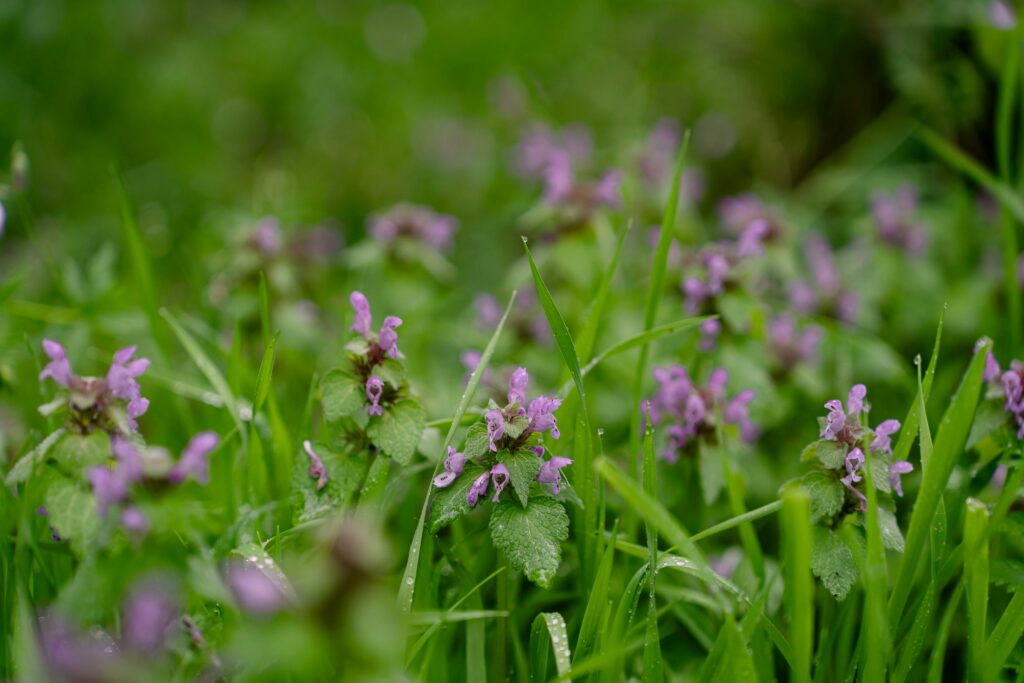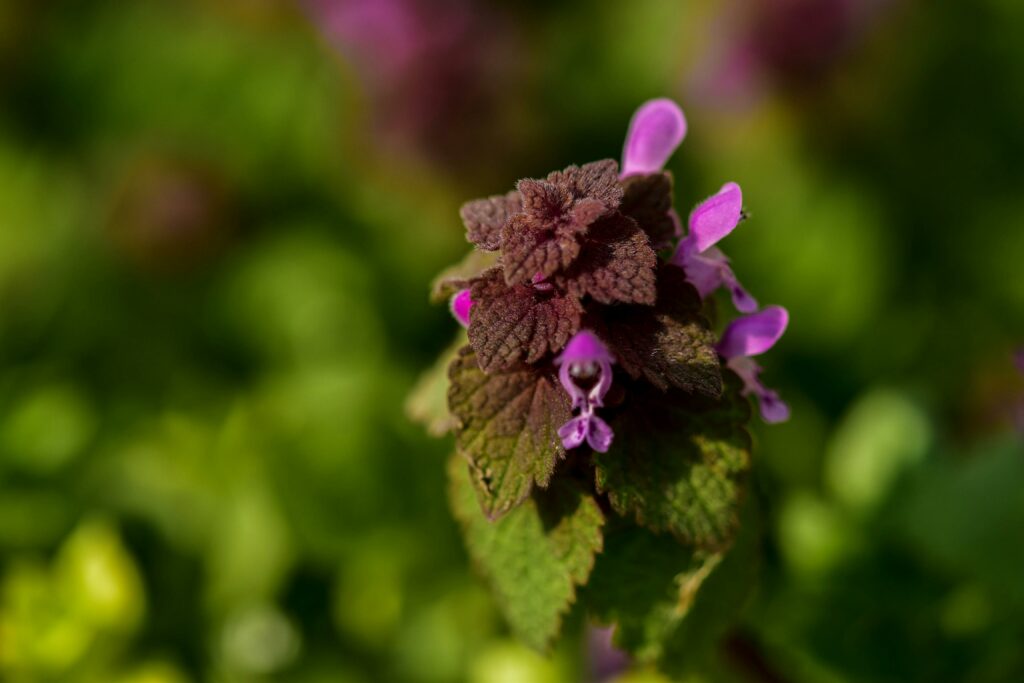As heat continues to blaze across Texas, your lawn might still be holding strong—but fall is just around the corner, and with it comes the potential for purple deadnettle. This pesky weed thrives in cooler months, and it can quickly spread and take over areas where grass is already struggling.
Even though you might not see it yet, understanding how purple deadnettle behaves and planning ahead will save you a lot of time and effort once the temperatures start to drop. By knowing what to look for, when it tends to germinate, and how to control it, you can stay one step ahead and keep your lawn vibrant all season long.
What is Purple Deadnettle?
Purple deadnettle is a winter annual, which means it germinates in the fall, grows through the winter, and produces seeds in early spring. It grows low to the ground and forms dense mats, making it easy to spot in bare patches or thin lawns. While it’s not toxic to humans or pets, it can spread fast and crowd out your grass. Early identification is key to stopping it before it becomes a bigger problem.

Understanding the Life Cycle of Purple Deadnettle
Timing is everything when it comes to controlling purple deadnettle. Because it’s a winter annual, it begins growing in the cooler months and produces seeds in early spring. If you catch it before it flowers and seeds, you can prevent a whole season of weeds from appearing.
- Fall: Seeds germinate and small seedlings appear.
- Winter: The plants grow low to the ground, forming mats. This is a good time to apply preventive measures.
- Early Spring: Purple flowers emerge, and seeds are produced. By this stage, the weed has already started preparing for next season.
Knowing this cycle helps you plan your control methods more effectively. Hand pulling and herbicide treatments work best when the weed is young and actively growing, before seed production begins. Read our article about when to hand-pull weeds vs when to use herbicides.
Steps to Remove Purple Deadnettle
1. Hand Pulling
For smaller infestations, hand pulling is one of the simplest and most effective methods. Make sure you remove the entire plant, roots included, or it may grow back. Pulling is easiest after a rain when the soil is soft. Wear gloves to protect your hands, and dispose of the weeds in your compost or trash—don’t leave them on the lawn to reseed.
Learn how to start a compost pile in your backyard.
2. Mowing and Lawn Maintenance
Regular mowing helps keep purple deadnettle from flowering and spreading seeds. It also encourages your grass to grow thicker, which naturally crowds out weeds. Keeping your lawn healthy with proper lawn mowing height, watering, and fertilization is one of the best defenses against weeds in general.
3. Selective Herbicide Treatment
For larger infestations, using a selective herbicide can help target purple deadnettle without harming your grass. Always follow the instructions on the label carefully and apply when the weeds are actively growing for the best results. If you’re dealing with other broadleaf weeds in your lawn, you might also find our guide on how to get rid of black medic weed helpful.
4. Preventive Measures
Prevention is the best strategy for long-term control. Fertilizing appropriately, aerating your lawn, and overseeding thin spots can help create a dense, healthy turf that weeds can’t easily invade. Avoid leaving bare soil, as it provides the perfect environment for purple deadnettle and other weeds to establish.
Purple Deadnettle Life Cycle and Control Methods
| Season/Stage | Purple Deadnettle Growth Stage | Key Characteristics | Recommended Control Actions |
|---|---|---|---|
| Fall | Seeds germinate and small seedlings appear | Tiny plants, low to the ground, easy to miss | Apply pre-emergent if needed; start monitoring for seedlings; early hand-pulling is effective |
| Winter | Plants grow, forming dense mats | Leaves are purple-tinged, low-growing mats | Hand-pulling for small patches; regular mowing to prevent flowering; maintain thick, healthy grass |
| Early Spring | Purple flowers emerge and seeds are produced | Weed produces seeds for next season | Apply selective herbicides on actively growing weeds; remove flowering plants before seeds drop |
| Preventive Measures (Anytime) | Healthy lawn maintenance | N/A | Fertilize properly, aerate, overseed thin spots, remove debris, and monitor for new growth |
When to Call the Professionals
Sometimes, despite your best efforts, weeds like purple deadnettle can persist. That’s where professional help comes in. Ryno Lawn Care offers full-service lawn care that includes weed control, fertilization, and regular maintenance to keep your lawn healthy and vibrant year-round. We can tailor a plan to your specific lawn conditions and make sure weeds don’t get the upper hand. Check out our full-care lawn services here.
By understanding the life cycle of purple deadnettle and acting early, you can stop it from taking over your lawn. Healthy, well-maintained grass isn’t just beautiful—it’s your best defense against weeds.

